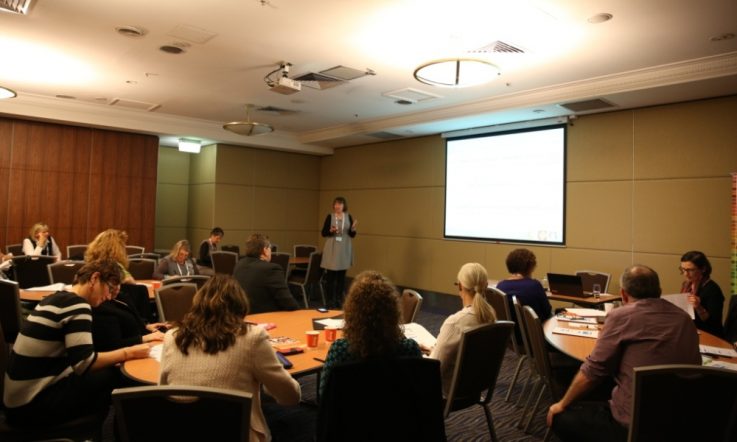When Teacher published a piece by New South Wales academic David Roy earlier this year on the implementation and benefits of cross-curricular approach Queensland educator Leanne Chesterfield got in touch to share the fact that her school has spent the last few years developing a cross-curricular framework.
In this three-part series, we'll take a look at how Chesterfield and colleagues approached the task, share examples of their topic planning, explore the impact on staff and students, and discuss some of the logistical challenges and solutions.
Leanne Chesterfield is one of three Deputy Principals at Kimberley Park State School (KPSS), 30 kilometres south-east of Brisbane. One of her key roles is Curriculum Manager.
Although it's a Prep to Year 6 school, Chesterfield explains it's multi-age and those class structures can change from year to year depending on enrolments. ‘For example, in one calendar year we may have a Year 2/3 class, but in the following year we may have a Prep/Year 1 class.'
She adds that multi-age classes are a traditional aspect of KPSS ‘the premise being that when you look in the room, you cannot distinguish the “year-levelness” of the students because they are taught all together'. This multi-age structure has been in place since the school opened in 1985.
Prior to developing a cross-curricular approach, the school had been using the state education department's Curriculum into the Classroom (C2C) resource. ‘The [multilevel] C2C resources provided programs for one calendar year of teaching and learning, but we were running into difficulty with the shifting class structures from one year to the next and would find we had students who were repeating [or missing] units of work,' the educator tells Teacher.
To address these issues, staff decided to put together their own units of work to supplement existing C2C materials, starting with two-year's worth of Science units – a whole-school framework with an ‘A' year and a ‘B' year. Chesterfield takes up the story again. ‘During this writing process I would work with teachers using an assessment alignment planning process. To address the time management issues of an unwieldy syllabus, we began to merge some subjects together, Science with Design Technologies for example. As we played in this “sandpit”, we were also able to play on occasion with making topic links to other subject areas, such as English units of work.'
Although the aim was to move away from C2C, the education department materials proved valuable during the transition process – aspects of C2C lessons, information and resources were included in the school-developed units of work.
An important part of the curriculum design process was feedback from teachers. As the units were being developed, teachers said they preferred flexibility in delivery timelines and the new 10-week units of work to the C2C's five week units. Chesterfield continued to work on more multi-age topic-related units and, following conversations with teaching staff, the leadership team requested the development of a two-year curriculum framework – an ongoing process.
‘This framework is being developed using four sectors: Prep, Junior (Years 1 and 2), Middle School (Years 3 and 4) and Senior (Year 5 and 6),' Chesterfield explains. She adds the school runs a straight Prep program wherever possible to cater for Early Years Curriculum Guidelines and teaching demands. ‘We have evolved the Junior, Middle and Senior school units to overlap so that we have sustainability in those years where we might have a class that sits across two sectors. For example, when we write a Senior school unit of work, we also build in Year 4 considerations just in case we end up with a Year 4/5 class structure one year.'
Getting to this point has been a real team effort. Aside from regular teacher and student feedback, KPSS has a Committee for School Improvement and Local Consultative Committee. Chesterfield also had consultations with cohort and sector leaders, who also shared information with colleagues at their team meetings.
‘There was never a particular point where we had to make a call one way or another as to whether or not to continue – it was a kind of organic process.' Reflecting on the journey to this point, the educator says it's now a case of continuing to work on and fine-tune the approach.
Stay tuned: In the next article, Leanne Chesterfield shares examples of the cross-curricular units developed at KPSS.
Think about a topic you’re teaching next term – what opportunities are there to make links to different subject areas?
How often do you share your planning with colleagues in other subject areas?



